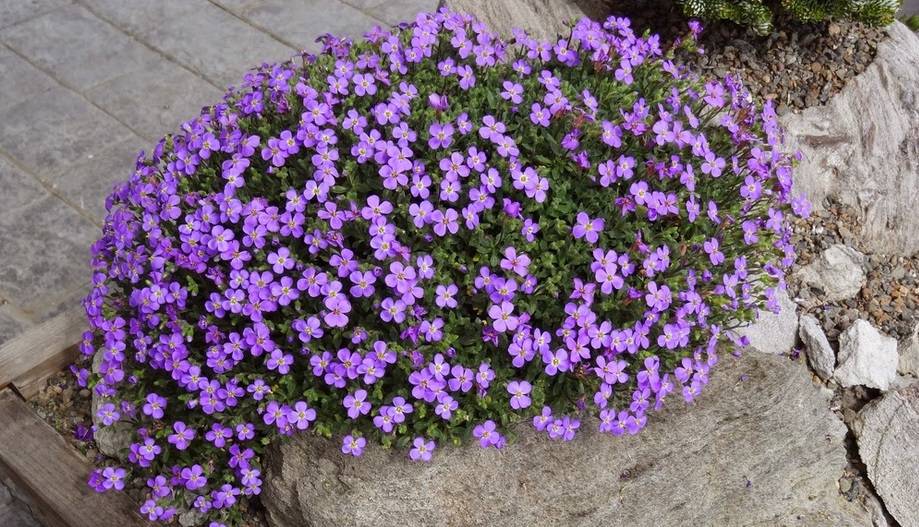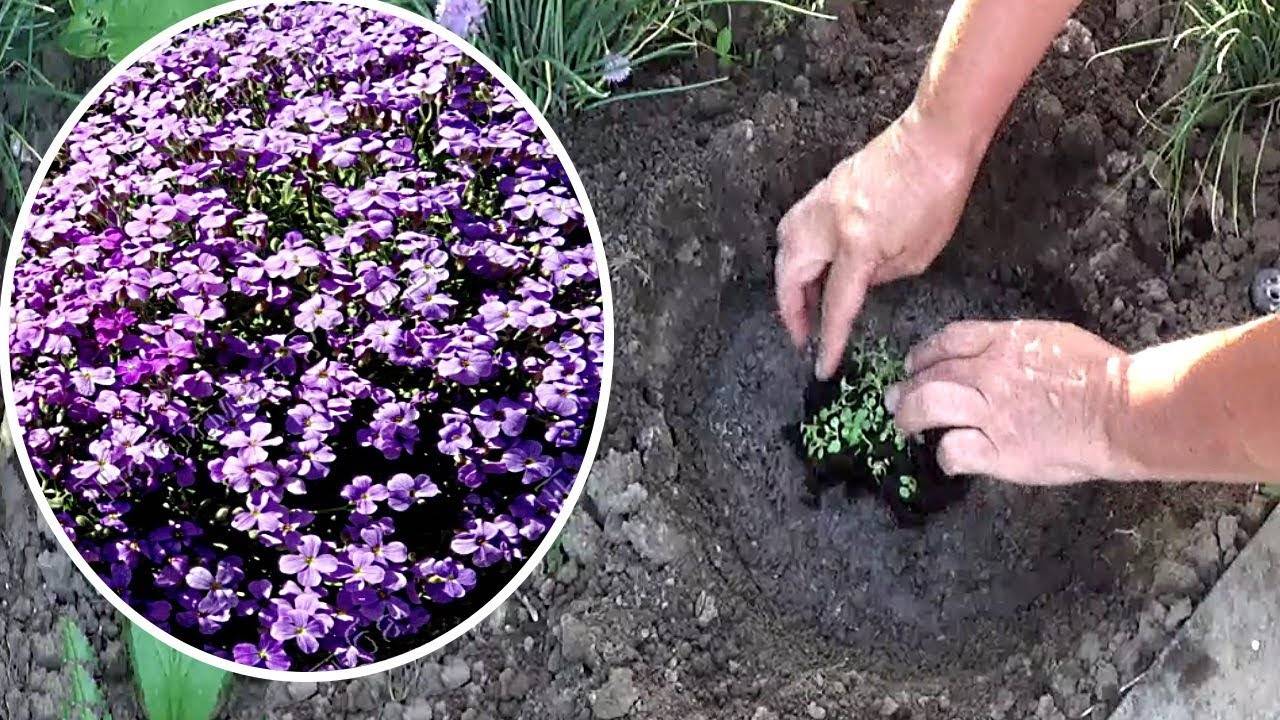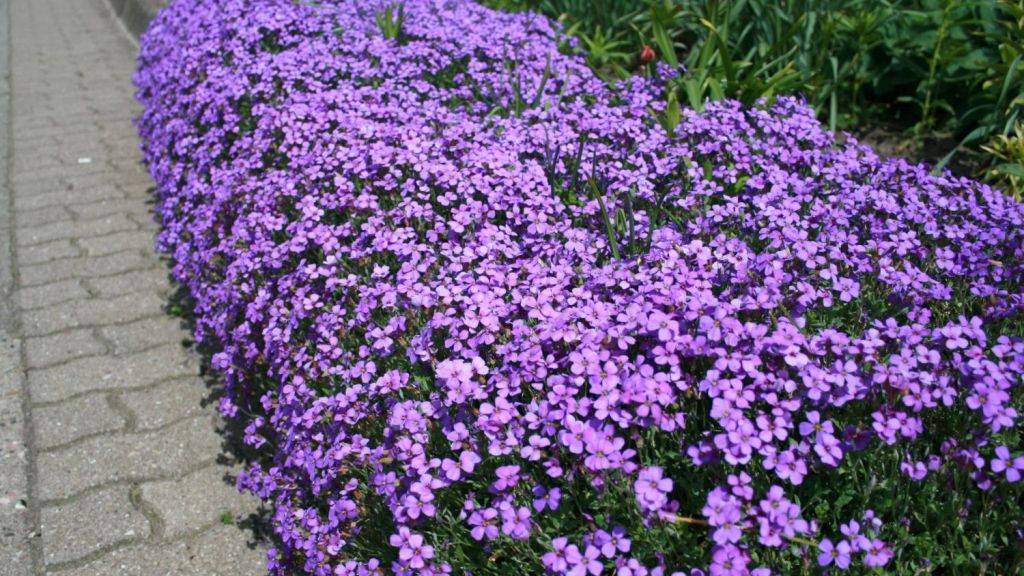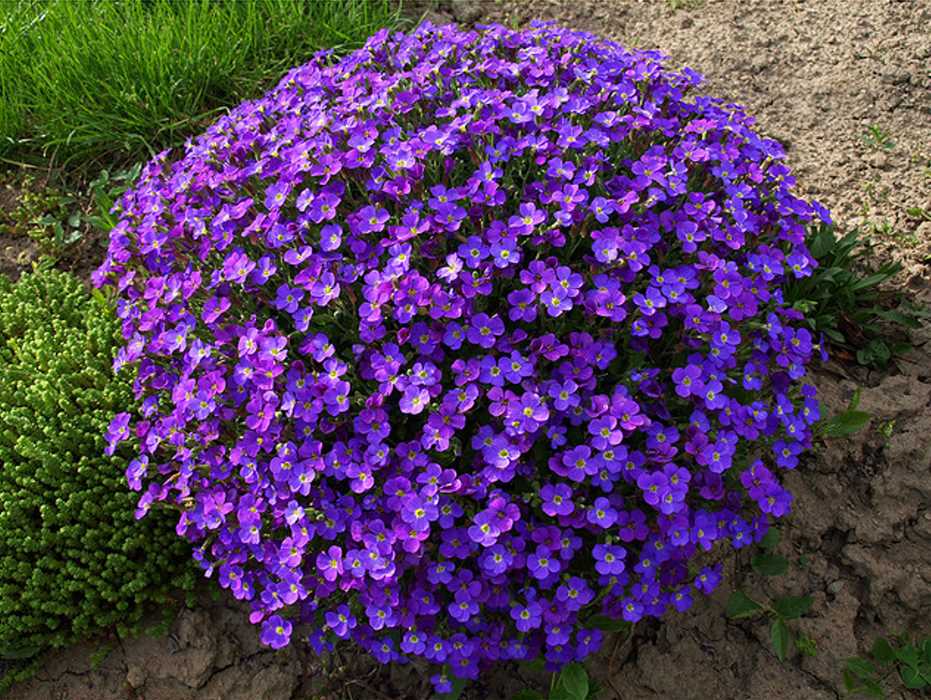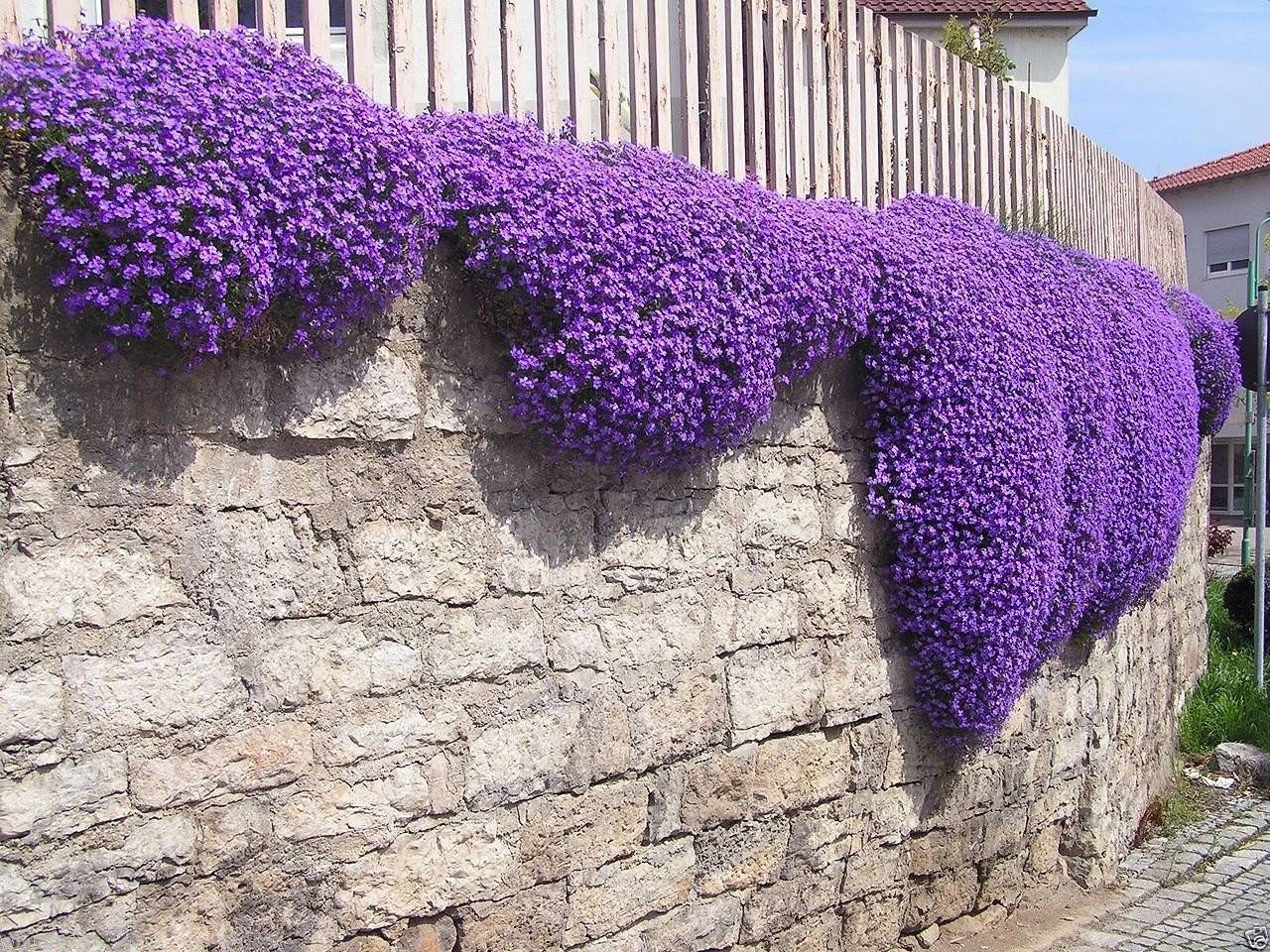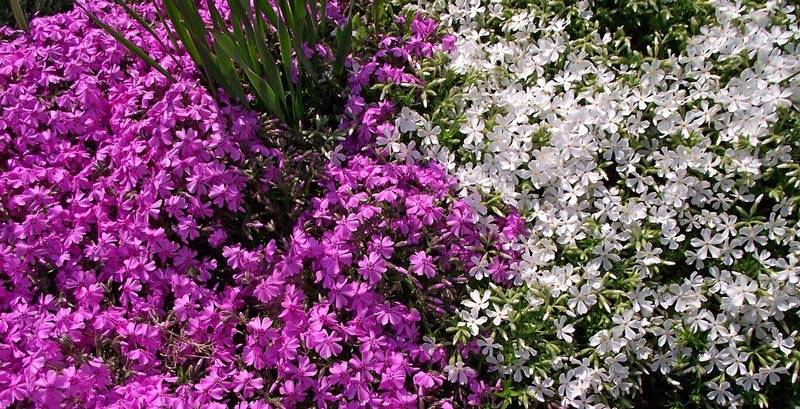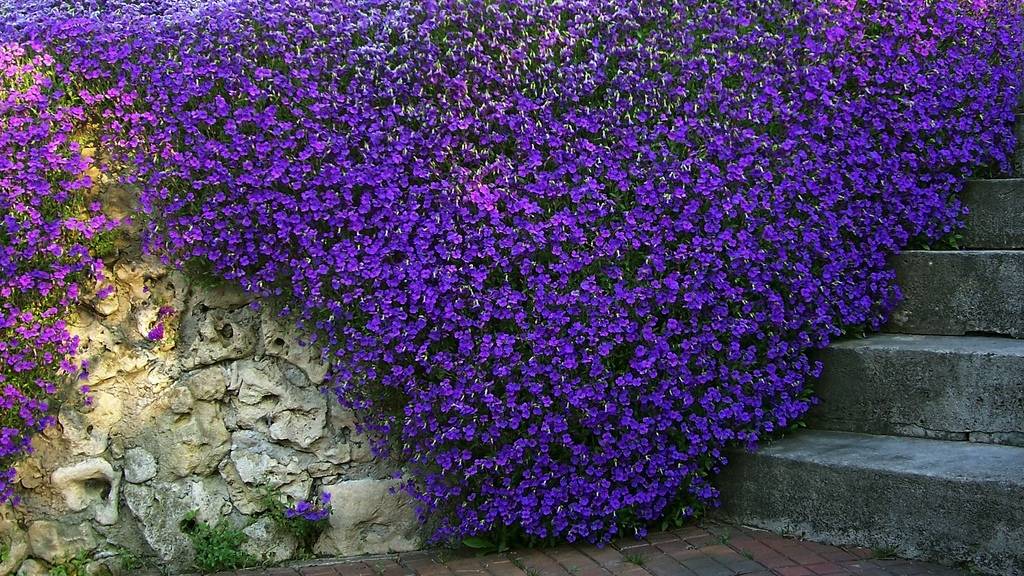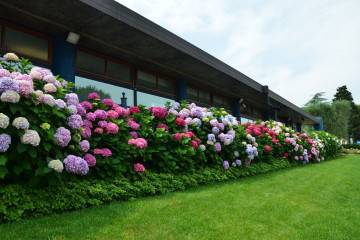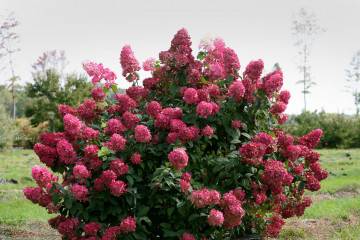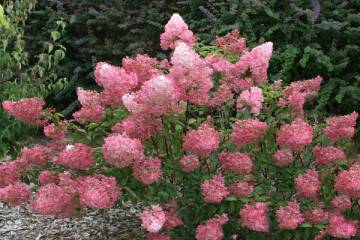Aubrieta flower - outdoor cultivation
Content:
Aubrieta (aubretia) belongs to the category of herbaceous plants that are members of the Cabbage family. An evergreen perennial crop grows in Italy, France and South America. In order to decorate the ground with a bright grassy carpet, Aubrietta is ideal - how to grow this plant from seeds will be described later. By properly caring for a perennial, you can grow healthy shrubs that will decorate your garden.
Characteristic
Aubrieta is a spectacular representative of perennial ground cover plants. The length of the stems can reach 25-35 cm. The shoots of the culture are divided into 2 varieties:
- vegetative, creeping along the surface of the soil;
- lateral branches that rise upward.
Due to the rapid growth of the culture, an oblong-shaped bush or dense carpet soon forms on the site. Along the entire length of each shoot, one can note the presence of small pubescent leaves, endowed by nature with oval outlines or obovate.
The leaf plates are attached to the stems with rather short petioles. The extreme parts of the green mass can be either solid or jagged. Dense pubescence gives a bluish tint to the green leaf plates.
At the end of spring, the bushes are covered with small flowers, which are located singly or collected in brushes. The flowering period usually lasts 40-55 days. Corollas consist of 4 bent petals, growing together into narrow tubes, from which yellow anthers peep out.
The petals are painted in different shades:
- purple;
- pink;
- blue;
- white;
- purple.
After the completion of the pollination process, the ovary of fruits begins - small swollen pods, in which small seeds of a light brown hue are formed. They can be sown for further reproduction. See below for information on how to grow Aubrietta.
Planting aubrieta
Planting and caring for a long-term shave is simple. As soon as the threat of night frost has passed, you can start planting flowers in open ground. As a rule, planting works are carried out at the end of spring. When choosing a zone for planting seedlings, it is worth giving preference to areas that are well lit by the sun's rays.
Experts recommend to thoroughly loosen the soil before planting so that it passes water well and add a small amount of peat or ash to the soil. When choosing a zone for planting a perennial crop, you should give preference to neutral or slightly alkaline soil.
Planting rules for hybrid aubretia
Aubrieta is a plastic plant, so these flowers are often used to create rock gardens and flower beds of any shape.
Landing order:
- Sufficiently deep pits are dug in the selected area for planting. The distance between the bushes should be 5-7 cm.
- The acquired seedlings are very carefully removed from the cups, which will make it possible not to harm the root system.
- The roots, together with an earthen lump, are lowered into the hole and covered with soil mixture.
- The soil is compacted and covered with a layer of mulch. The layer thickness should be within 5-7 cm.
Watering and loosening the soil
Moistening of the soil should be moderate, since stagnant water causes rotting of the root system. Plants planted in open ground need frequent watering only during dry periods.
In order to strengthen the roots of the flower, experts recommend mixing the water intended for irrigation with sodium humate. Weeds should not be allowed to appear on the site, as all the nutrients will be spent on weed growth. Aubrieta in this case will be weakened and susceptible to disease.
To prevent the occurrence of such a nuisance as rotting of the root system, it is recommended to use mulching.
Reproduction methods
There are several ways to propagate a plant. Due to the unpretentiousness of the plant, any of them will be quite effective.
Aubrieta: growing from seed
This method is quite troublesome, but if done correctly, the result will please. When growing aubretia from seed, when to plant is one of the important questions. Usually they start planting in early to mid-May.
First, the site is cleared of weeds and small stones. The prepared planting area is dug up and leveled with a rake. Top dressing, wood ash and chalk are added to the soil. The soil is moistened. The seeds are chaotically scattered at a slight distance from each other. A small layer of river sand is poured over the crops. The soil is moistened again.
If an aubriet is chosen to decorate the site, how to grow this plant from seeds is a simple question. The first shoots will appear 14-21 days after planting.
Cuttings
The method of propagation by cuttings is used in the summer. During the planned pruning, a large number of green shoots (without flowers) are collected, which can be used for cuttings.
A layer of soil mixture is poured into the greenhouse, which includes peat and river sand. Shoots of a giant deltoid aubriet are planted in the ground. The soil is moistened. After a few months, you can expect full rooting of the cuttings. Young plants should be transplanted into open ground.
Reproduction by dividing the bush
The division of the bush is carried out both in the spring months and in the fall. A bush of Audrey or any other variety is dug up and divided into several parts. It is important that each plant obtained contains a root system and shoots. The bushes are transplanted in separate holes.
This method is not always effective. It is difficult for the separated parts of the plant to take root, so it is better to give preference to a different method of reproduction.
Top dressing and fertilizers
Aubriet flowers need additional fertilizing only 2 times during the growing season. The first time the fertilizer is applied 7-10 days after the perennial transplant. It is advisable to add the second dressing after pruning.
Experts recommend using complex fertilizers as top dressing, which are intended for flowering crops. It is important to follow the manufacturer's recommended dosage.
Plant transplant
Before replanting the plant, it is necessary to prepare the soil in the selected area for planting. It is important to get rid of weeds, moisten the soil and start loosening the soil. With the help of a hoe, it is necessary to dig depressions in the ground, the depth and width of which should correspond to the dimensional characteristics of the perennial root system.
The seedling is placed in the center of the recess. The voids are filled with soil. The earth is compacted and moistened. From above it is necessary to cover the soil with a layer of mulch, which is ideal for wood ash.
Pruning abriets
After the blooming of the aubretia, experts recommend starting pruning. Shoots are cut almost to the surface of the soil, which will contribute to the active growth of young stems with leaf blades. After a short period of time, the blooming of the aubriet will be repeated.
It is not necessary to repeat the trimming procedure in autumn. All leaf plates and shoots must remain in place.
Pests and diseases
Often the plant infects aphids. Small insects suck sap from leaf plates in a short period of time. The body surface of the aphid is colored in yellow, black, red and brown shades. The glossy surface of the green mass allows you to quickly detect parasites that concentrate under the foliage.
To cope with the invasion of pests, you should use the infusion of nettle. To prepare it, you will need to mix 1000 g of herbal raw materials in 10 liters of water, and then leave for about 24 hours.
The use of insecticides is permissible only in especially advanced cases. In order to prevent the invasion of aphids, it is recommended to systematically add a small amount of wood ash to the soil in which the flowers grow. The procedure is performed every 4 weeks.
Powdery mildew and root rot are considered the most common diseases affecting Aubrieta. The main source of the disease is the high level of humidity in the flower bed. The appearance of the disease is indicated by the appearance of a brown coating on the leaf plates and the stem. Plants should be treated as soon as possible with a colloidal sulfur solution (0.3%).
When root rot occurs, the culture begins to turn brown. To save the flower bed, it is recommended to stop moistening the soil, sprinkle the soil surface with sand and rotted wood. A perennial culture needs to be treated with a colloidal sulfur solution.
Flowering period
The groundcover begins to bloom in late spring or early summer. Flowering lasts about 40-55 days. After that, in the area of the stems, oblong pods of small size remain. The fruits contain brown colored seeds.
Once the pods begin to darken, you can cut them off and harvest the seeds. The seed must be wrapped in paper material and transferred to a cool room.
Plants obtained from harvested seeds may not inherit the characteristics of the parent bush. In order to preserve varietal characteristics, it is recommended to use a vegetative propagation method.
Preparing for winter
Adult flowers tolerate frost well if they are covered with a large layer of snow. When expecting severe frosts, it is recommended to cover the bushes with a layer of dry foliage and spruce branches, which will make it possible to protect the culture from freezing.
Use in landscape design
Landscaping professionals prefer to grow Aubrieta in rock gardens and along garden paths or curbs.
Perennial Campbell or any other variety, it is recommended to plant near:
- rocky alissum;
- cuts;
- milkweed;
- soap drinks;
- dwarf iris;
- phlox and Pozharsky's bells.
Aubrieta carpet looks amazing if you take care of the plant in a timely manner and cut off the overgrown shoots. With the help of special stones and low fences, you can create any shape of the flower bed. If desired, it is worth planting bushes along the fence or wall. Rather dense cascading outlines during the flowering period will become a real decoration of the garden.
Perennial Aubrieta is a decorative culture that needs systematic care. The effort spent on grooming will be rewarded with a chic appearance of a ground cover plant that will attract attention for a long time.
